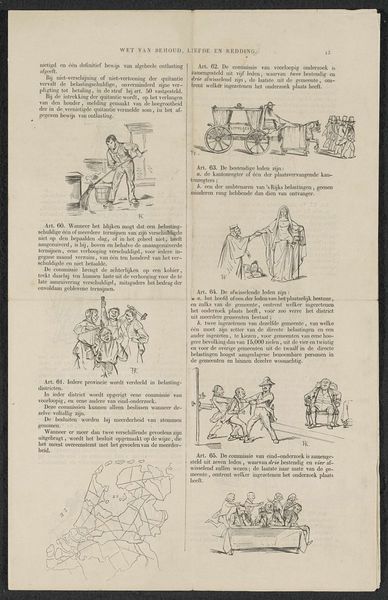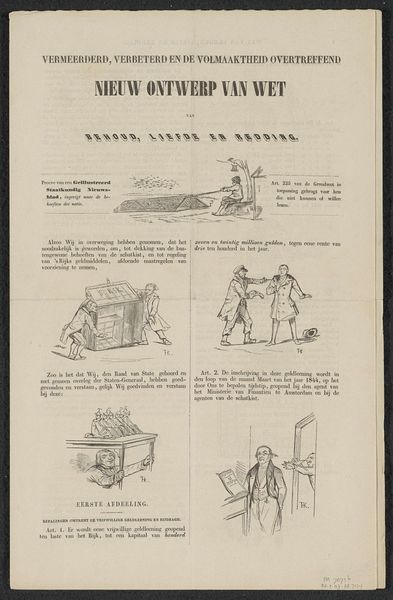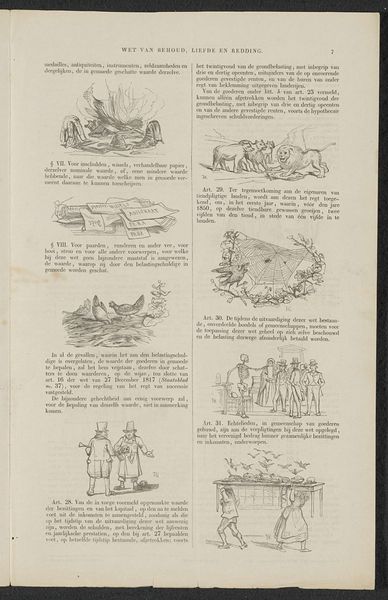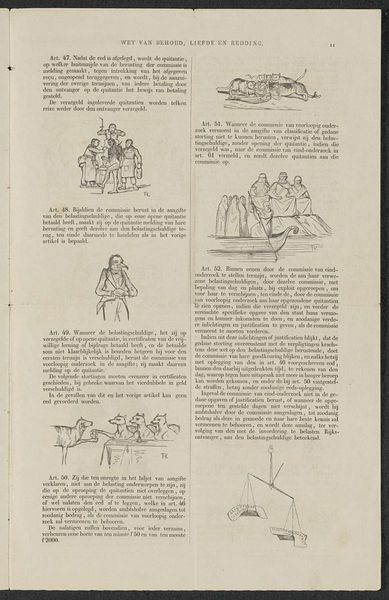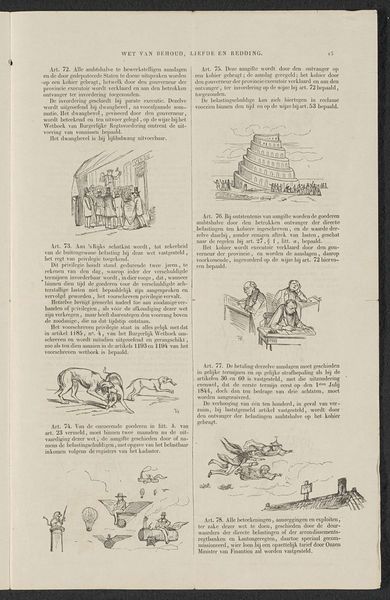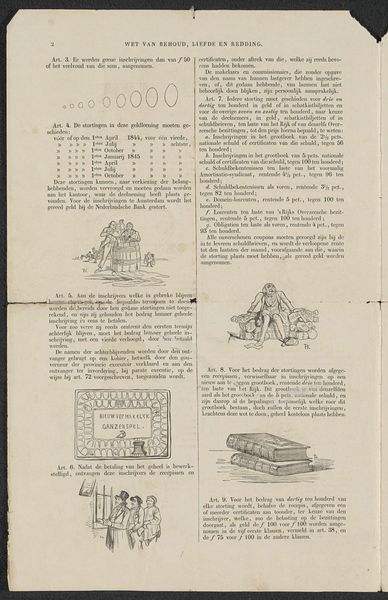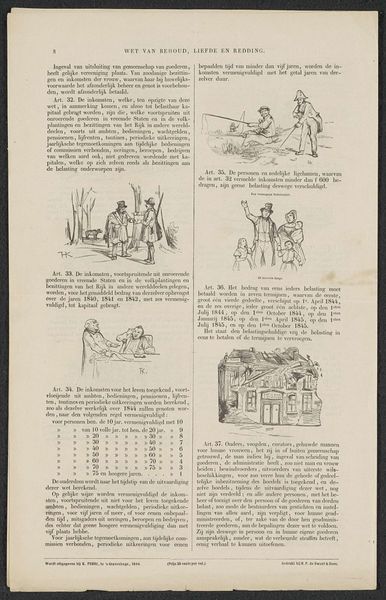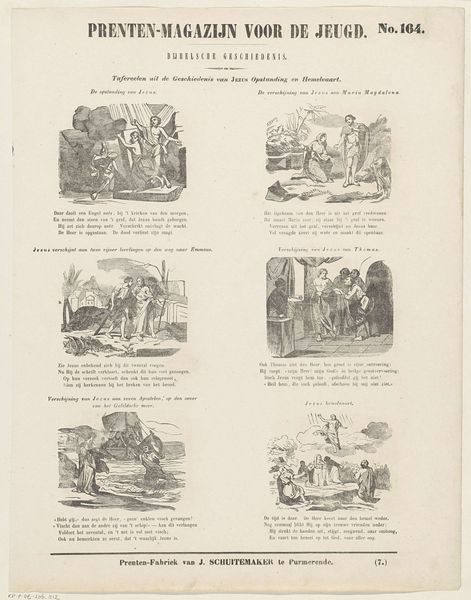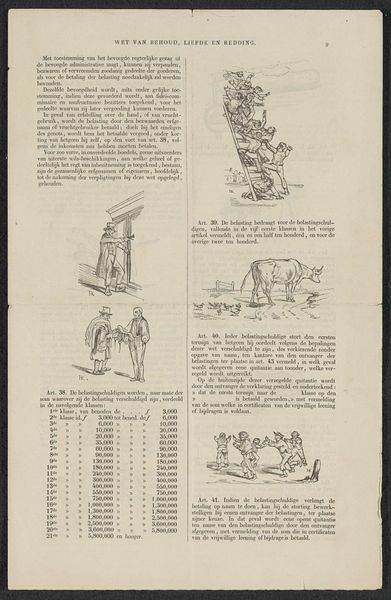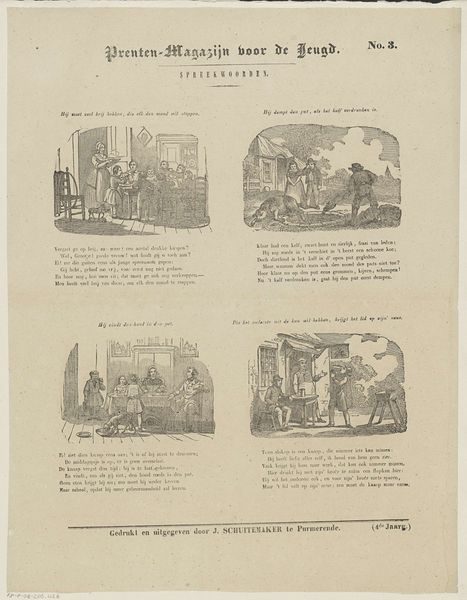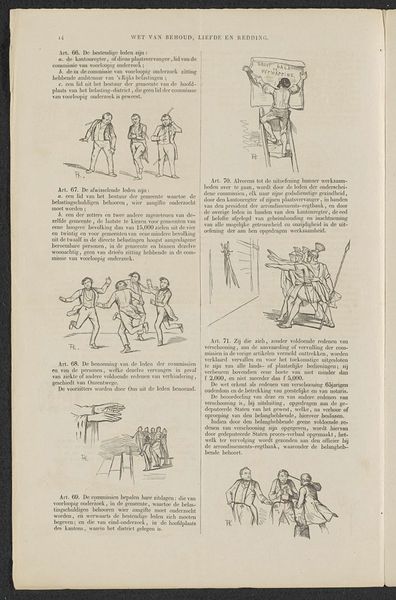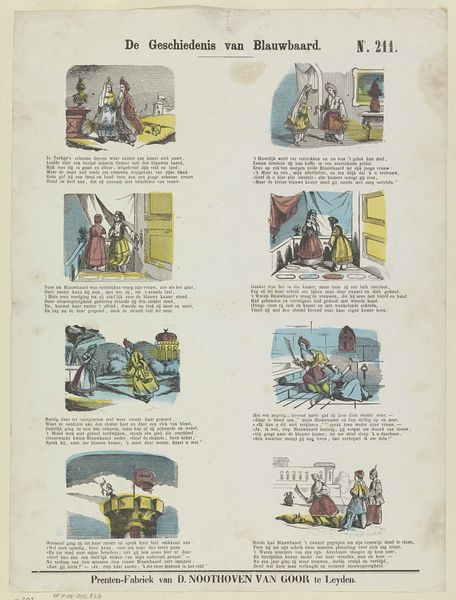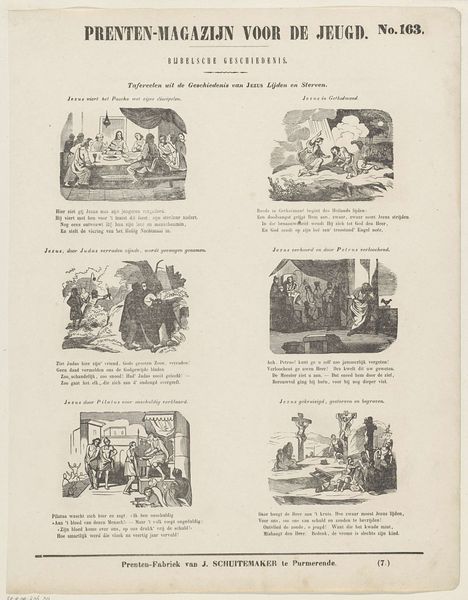
Satire op de aansporing tot deelneming in de (zogenaamde) vrijwillige 3% geldlening van 1844 (blad 6) 1844
0:00
0:00
hermanfrederikcareltenkate
Rijksmuseum
drawing, print, ink, engraving
#
drawing
#
narrative-art
# print
#
ink
#
romanticism
#
genre-painting
#
engraving
Dimensions: height 385 mm, width 245 mm
Copyright: Rijks Museum: Open Domain
Curator: This engraving, entitled "Satire op de aansporing tot deelneming in de (zogenaamde) vrijwillige 3% geldlening van 1844 (blad 6)," which translates to "Satire on the encouragement to participate in the (so-called) voluntary 3% loan of 1844 (page 6)," was created by Herman Frederik Carel ten Kate in 1844. It's currently held in the Rijksmuseum collection. Editor: It feels like peering into a very dense, visually verbose comic strip, but without the color! I see vignettes scattered all over. Some are grim, like that figure slumped over on his bed with a sign in the back; others, well, the fellow walking with the stick... that's anyone's guess. Curator: Indeed. The density speaks to its nature as a satirical print commenting on Dutch financial policy during a turbulent time. Ten Kate was known for his narrative and genre paintings, and here he’s applying his storytelling skills to political commentary. Editor: The level of detail for what's essentially a political statement is striking. He crams so many details into these small scenes, each potentially laden with symbolism for viewers of that era. I wonder if anyone truly understands all the satire anymore. Curator: It’s a commentary on a specific moment, yes, referring to the King Willem II’s appeal for a voluntary loan to alleviate state debt. Many considered it a thinly veiled tax increase, hence the satire. The imagery uses scenes of daily life and trade—tax assessments, shipping—to illustrate the loan’s impact. Editor: Knowing the title shines an unkind light. Those once puzzling vignettes of what felt like the merchant's daily life are now evidence to a corrupt scheme! I’m also strangely captivated by the fact that even printed matter needed to abide by tax guidelines and laws... feels a bit on the nose, don’t you think? Curator: Absolutely, and Ten Kate shrewdly used print to voice dissent, highlighting the social and economic anxieties of the time. The Romantic style, typical of the period, blends with social critique. Editor: It really underscores how art, even in the form of something mass-produced like an engraving, can serve as a potent tool for resistance and, in this case, very specific criticism. Curator: It reminds us that political commentary finds its place everywhere. Ten Kate’s "Satire" captures a pivotal moment of public discontent and is so relevant for today. Editor: Yes, it’s a little reminder that money, politics and humour never fails. This artwork brings this up by being very particular on a matter that goes back centuries ago.
Comments
No comments
Be the first to comment and join the conversation on the ultimate creative platform.
